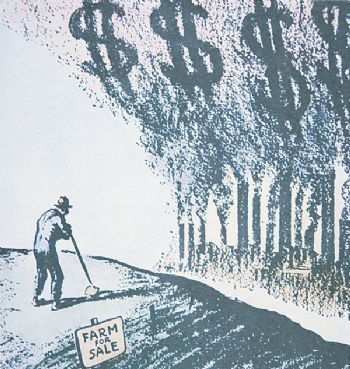
Agriculture in the 1920’s
Effects of Mass Production on Agriculture in America in the 1920’s
During the 1920s people who lived in the industrial cities and towns benefited from the effects of ‘Mass Production’. The use of assembly lines meant that the cost of many goods kept on falling which meant that more people could afford to buy them. This kick started the cycle of prosperity in these industrial towns and gave people jobs which meant that they could now afford to buy washing machines, vacuum cleaners, cars and radios.
However, many people living in the agricultural (farming) areas of the USA could not afford to buy these new goods. They suffered from the effects of ‘Mass Production’.
Before mass production farming techniques were introduced into farming, everything was done using muscle power. This involved employing hundreds of people to plant and harvest crops. The introduction of ‘Hire Purchase’ and new machines such as combine harvesters and tractors meant that farmers could produce more food using less people. This led to an increase in unemployment and a drop in wages for farm labourers. Farming areas such as the South and the Mid West were badly affected.
Video Clip: American Farmers in the 1920’s
Farmers were also badly affected by the introduction of mass production. As farmers produced more produce using their new machines the price of their crops dropped. This was caused by producing more food than was needed by the population. This surplus of food was called ‘overproduction’. As farmers couldn’t sell their produce prices dropped further which forced many farmers to borrow money from the banks and re-mortgage their land so that they could survive and not go bankrupt.

This situation was made worse by the introduction of Prohibition. In the past when the price of wheat had been too low they had used it to make whisky or ‘Moon Shine’. Prohibition, the banning of the production and drinking of alcohol, prevented them from doing this. In 1929, the price of wheat and barely hit an all time low. It was cheaper to burn the wheat as fuel than pay to transport it to market!
Relevant Links
A History of American Agriculture. Key events in the History of American Agriculture in the 1920’s.
